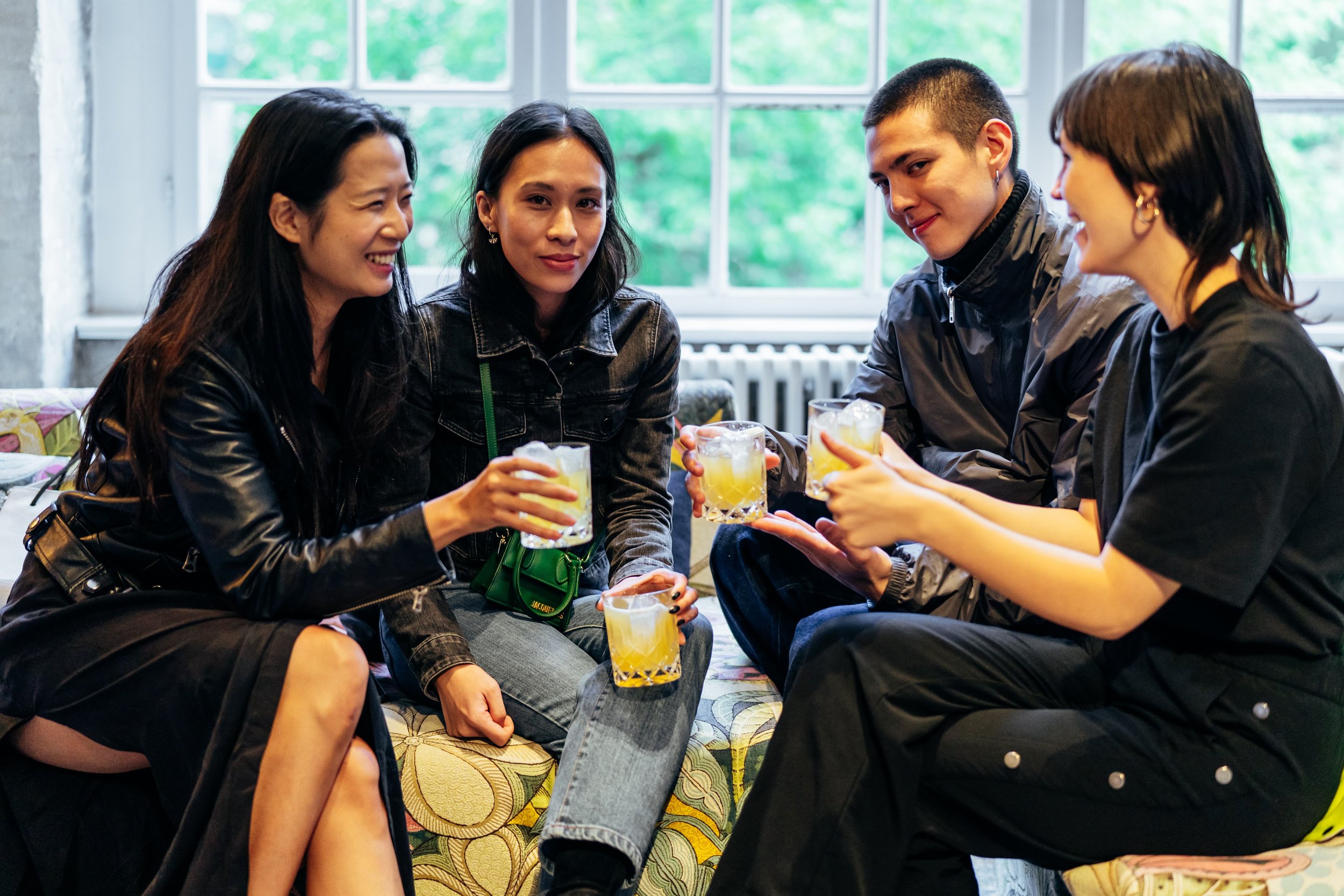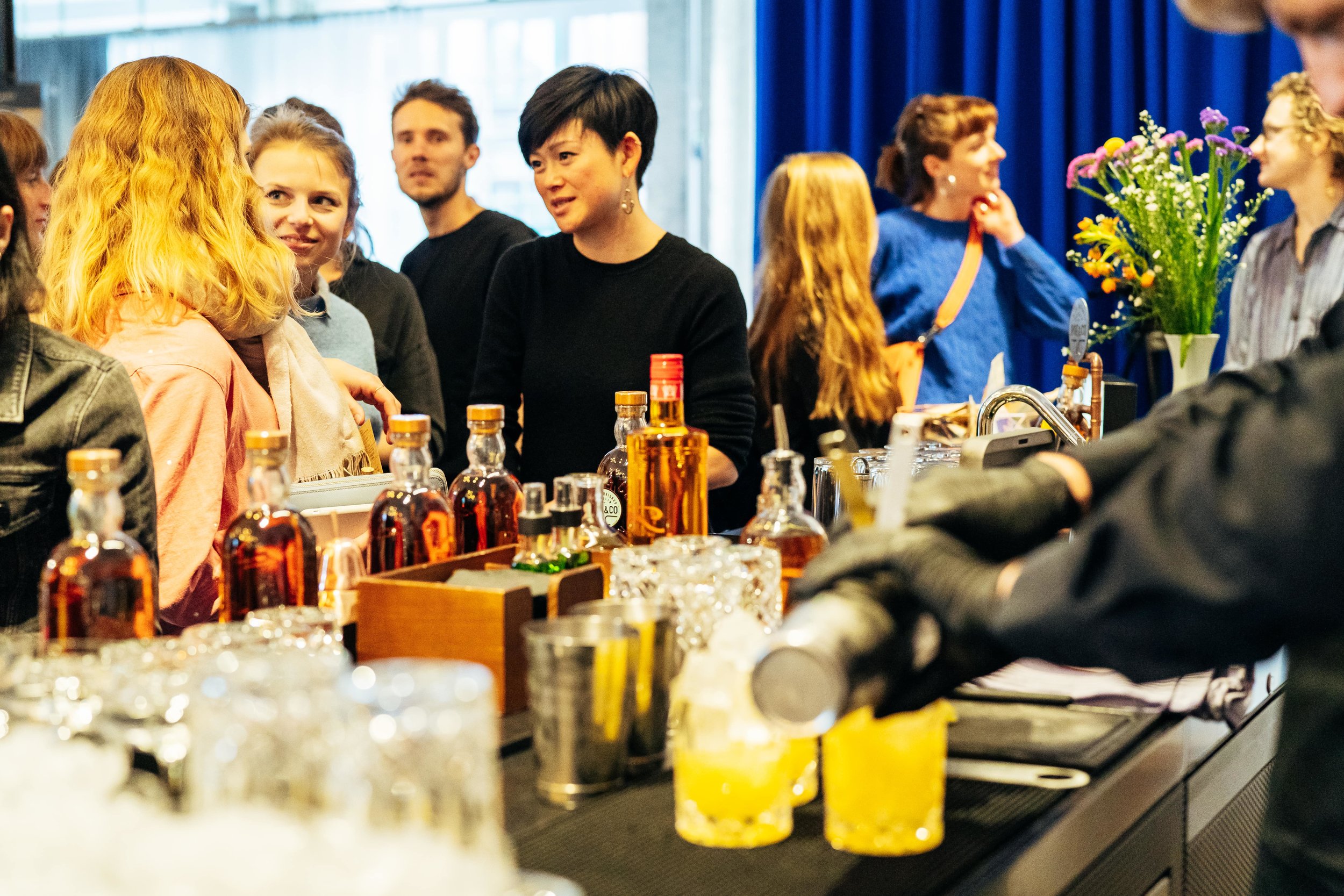Lesson 10: “Talk”
with Shani Leiderman, Julian Lechner and Tainá Guedes
Who are the people shaping tomorrow? How are these people reinventing the seemingly everyday? For the next Roe & Co.llective x Cee Cee Lesson we have invited three changemakers to share the methods, decisions and strategies they use to reinvent the ordinary.
Interview with Julian Lechner from Kaffeeform
“The idea and starting point was the simple question of what happens with used coffee grounds, and the desire to reuse this good, natural raw material to create something completely new.”
Are you yourself a great lover of coffee?
Julian Lechner: Absolutely! Preferably black filter coffee made from lightly roasted speciality beans from the Berlin coffee scene :)
You make coffee cups from leftover coffee grounds. How did you get into it?
Julian Lechner: I studied product design in Bolzano, Italy, and of course I drank a lot of coffee. The idea and starting point was the simple question of what happens with used coffee grounds, and the desire to reuse this good, natural raw material to create something completely new. Three years of research, experiments and tests followed until we arrived at an innovative and versatile material: Kaffeeform. From our initial idea to create something durable and sustainable from old coffee grounds, a completely new material has emerged after countless experiments and years of work. Entirely new products can now be produced from old coffee. In 2015 we founded the eponymous company, Kaffeeform, in Berlin and launched the espresso cup as a first product, expanding to include cappuccino, latte and take-away cups.
From loose coffee grounds to the finished coffee cup, what does the manufacturing process look like?
Julian Lechner: Our partner – a social workshop in Berlin – collects the coffee grounds from local cafes and roasters, dries them by hand and adds other renewable raw materials. The innovative and patented coffee mould material that results is then pressed into the finished products. At the workshop, the products are branded and individualised, packed and sent to end customers, which include cafés, shops and museums throughout Europe.
Is there another project or idea that you would like to tackle in the future?
Julian Lechner: I would like to set up a digital detox station in Berlin where you can disconnect from your electronic devices on a hourly, daily or weekly basis :)
What do you expect from the Cee Cee Lesson?
Julian Lechner: An evening filled with good discourse, exciting conversations and lots of inspiration!
Interview With Tainá Guedes
“Art has the power to reach people via their deepest emotions.”
Tainá, you are a product of multiculturalism. You and your work are shaped by diverse cultures. How did you grow up?
Taina Guedes: I was born in Brazil where a few people have a lot and many nothing or too little. And like in many other countries, these two sides hardly get in touch with each other. But that was not true for me. I grew up with the conviction that when you have enough to have a good life, then you should share some of your wealth with others. And I am not necessarily talking about money. As a child I had 13 cats because I felt responsible for them. I would sing for the garbage men to thank them for cleaning our streets. You might call this naive or romantic, but for me it was an attitude towards life.
What has shaped you in life? Tell us about some experiences, people and stories from your life and what they’ve taught you.
Taina Guedes: My life is made up of many worst case scenarios that I transformed into best case scenarios. I lost my father at the age of 11, and from that our family’s financial security. I started to work to help my mom. Since an early age, I saw the best and the worst of people and learned how it is possible to transform the worst into the best, at least for ourselves. I became a strong person, and know how important it is to stand up for people’s rights, for minorities, and for people who can’t help themselves.
Where did your passion for cooking and awareness of food sourcing come from?
Taina Guedes: I think it started long time ago with my parents. I remember cooking with sand and eating my creations. They were delicious, but mom was not happy about it. I always thought my father was responsible for my interest in nutritious cooking and a healthy lifestyle, as he was macrobiotic practitioner and wanted me to go to a Waldorf School, where we ate organic and biodynamic food. But when I started researching the Japanese concept of “Mottainai”, I realized how much my mom had influenced me.
How do you combine your interests in food and art?
Taina Guedes: Given there are many people on this earth and we all need to eat, food has a big impact on people, animals’ lives, and on our environment and politics. Art has the power to reach people via their deepest emotions. So if we combine food and art, we have an amazing recipe to counter many of the crises we are living with.
What is it that motivates you to initiate and lead so many projects?
Taina Guedes: We live in an era of crisis, climate change, environmental degradation and hunger. There is no option besides using our time to create positive impact. Each of us should be doing something to help our planet. I am not suggesting we should act on all fronts, this would be way too overwhelming. It would be a big change if each of us did something to combat one of these crises.
How does food need to be thought of in the future to reduce waste?
Taina Guedes: We urgently need to understand that our individual decisions affect the co-inhabitants of our planet and that eating doesn't just affect ourselves. It is an act that impacts the planet.
Another glimpse into the future: Food Art Week 2019 is dedicated to the theme of water. What can participants expect?
Taina Guedes: The first event of Food Art Week will be in Berlin. We are planning to occupy a public space so we can gather together during the whole of August to present art exhibitions, art performances, workshops, talks, and discussions. We want to include children and adults; specialists and beginners.
Interview With Shani Leiderman
“I believe that good innovation, of the sort that proves itself through time, is a result of this sort of thinking, rather than a direct attempt to simply do something new.”
How has your experience been working with your baker colleague Cynthia Barcomi?
Shani Leiderman: My relationship with Cynthia is one of the best things that ever happened to me. She is a partner and a friend, but most of all she is an amazing mentor. Her trust in me and my ideas empowered me to make this step, and her advice has been super valuable throughout the process – from negotiating the contract to putting the team together. It's a great gift to be able to start something new while drawing from so many years of experience.
You spent four years at indoor farming company Infarm, whose vision is for people and businesses to grow their own food hydroponically under LED light. How open is Berlin to urban farming?
Shani Leiderman: On the one hand, Berlin is one of the best places on the planet for starting new initiatives like that – people are generally open-minded and the cost of living is low, which means you have time and space to experiment. On the other hand, when we started, some people were a bit resistant to these methods, saying that they feel “unnatural”. The romantic idea of the farmer in the field is still prominent and some people feel like indoor farming threatens this. We had many philosophical and practical discussions on this topic.
How easy has it been to incorporate indoor growing at Beba?
Shani Leiderman: Working for so long with Infarm, I got “addicted” to the quality of the product and to working with such fresh greens. It's incomparable to buying stuff – even in the best farmer's market – so it was clear to me that we have to have it at Beba. It is a very interesting process, since logistically what we are doing is pretty new. The kitchen is used to simply ordering the products they need day to day, but here we simply have a fixed supply, right there. It’s a luxury but also a limitation. On the other side, for Infarm, we are the first restaurant that has so many farms and that manages the harvest all by itself, so that also requires adjustments and innovation on their side.
The theme of this Cee Cee Lesson is reinventing the ordinary. In coming up with a new food offer at Gropius Bau, did you feel like you were reinvigorating something?
Shani Leiderman: To be honest, I didn't think about it in these terms. I simply asked myself what would be the best thing I could do there. And what could make this place on the one hand unique, and on the other hand serve the wide range of guests we have here in the best possible way. I believe that good innovation, of the sort that proves itself through time, is a result of this sort of thinking, rather than a direct attempt to simply do something new.
You’re a first-time restaurateur. Have you drawn on the experience of people in the Berlin restaurant scene at all?
Shani Leiderman: Very much. Mostly from my mentor Cynthia Barcomi, but I also talked to as many people as I could.
Your current work is in many ways a collaboration. What do you think are the conditions for a successful collaboration?
Shani Leiderman: Mutual respect, trust, sensitivity, a good sense of humour and sharing a vision.





























































